Florence, Italy
In which I go in search of E.M. Forester's Florence, don't discover it, but decide that the world really is full of beautiful things, if only you know where (and how) to look.
I was in a sort of ecstasy, from the idea of being in Florence, close to the great men whose tombs I had seen. Absorbed in the contemplation of sublime beauty…I reached the poiont where one encounters celestial sensations…Everything spoke so vividly to my soul. Ah, if I could only forget. I had palpitations of the heart, what in Berlin they call “nerves”. Life was drained from me. I walked with the fear of falling…
-Stendahl - Rome, Naples and Florence
{Florence, Italy}
The French writer Stendhal visited Florence in 1817 - one stop on a lengthy grand tour of Italy - and wrote about the experience in his book Rome, Naples and Florence. One afternoon, while visiting the Basilica of Santa Croce, he stopped into the Niccolini Chapel to view its famous frescoes by Baldassarre Franceschini - the artist known as Il Volterrano. The way he tells it, he was lucky to make it out alive. He wrote that “the life was drained from me. I walked with the fear of falling…” and that he had “heart palpitations”. The beauty, it seemed, was too much for him.
19th century drama queen? Or was there actually something to the swooning?
Between 1977 and 1986 a Florentine psychologist reported over 100 incidents of visitors being admitted to local hospitals after becoming overcome while visiting Florence’s art treasures. To be clear, this is not exhaustion we’re talking about…not weariness at spending too long dragging your feet through the Uffizi Galleries. This is acute sickness: fainting, nausea, even heart troubles. The psychologist gave the phenomenon a name: the Stendhal Syndrome.
I first learned about Stendhal’s Syndrome as a freshman art history major, studying Early Renaissance Art and Architecture in Italy. In between seemingly endless slides of historiated crucifixes, our professor mentioned this mysterious ailment of beauty that on occasion overtook visitors to Florence. It sounded so romantic. Florence, I thought, must be amazing.
Two years later I stumbled on an old book at the library and checked it out to read over Christmas break. The book was short, and I raced through it in one night. It was A Room with a View, and oh, how I wanted to be Lucy Honeychurch! In Santa Croce with no Baedeker. In the Piazza della Signoria with young Mr. Emerson. Under a Loggia…Florence must be the most magical place in the world.
Which is why I find it very disappointing, thirty years later, to be standing on the banks of the muddy Arno, looking at the Ponte Vecchio and thinking: this is a bridge that only a mother could love. I think of Miss Bartlett and Lucy, so angry with the Cockney Signorina for not delivering on her promise of a room with a view of the Arno. Eh, I think. Maybe the courtyard isn’t so bad, even if it does smell a bit.
I think about Lucy and George Emerson, too, the first time I step into the Piazza della Signoria - where Lucy witnesses the death of a young Florentine man - but then I also think: Why is this space so awkward? Do they just plop a sculpture down under this loggia whenever they find one they like? Why is the loggia just shoved into the corner? And why is it all so brown?
The Duomo is of course the Duomo - the star of the show in Florence. Beautiful in creamy white, pink and green marble with Brunelleschi’s deep red dome atop and Giotto’s truly breathtaking bell tower keeping watch next door. But the street that leads from Santa Maria Novella train station to the Duomo is, frankly, a nightmare - and there are massive crowds of people everywhere. People who seem to be completely unfamiliar with basic polite principles like sharing the sidewalk and queueing.
For these and other reasons, Florence and I get off on the wrong foot. I leave disappointed…surely I must be missing something.
A year later, I am in Florence again. I’ve been staying in nearby Orvieto for a month, and have taken the train to Florence a handful of times. I’ll be leaving Italy soon, and so I know this is likely my last visit to the city. I’ve seen so many beautiful things in Florence - Michelangelo’s David, Botticelli’s Primavera, Fra Angelico’s Annunciation - but I still feel like something is missing. I want to really dig in and appreciate the city for what it is - and not be disappointed because it’s not what I expected it to be.
It is a Sunday morning, near the end of November. Instead of getting off the train at Santa Maria Novella, I stop at the Campo Marte station, and this makes all of the difference in my mood. Instead of chaos, I walk quietly through a residential neighborhood, stopping to pet friendly local dogs and to browse an antiques and produce market set up in a small parking lot. My destination is the Christmas market at Santa Croce - the same Santa Croce where Stendhal swooned so many years ago.
Christmas celebrations start early in Florence: the streets are already draped with twinkling strings of lights. Beautiful holiday displays fill shop windows, and doors are lined with evergreens and ribbons. Bakeries and confectioners overflow with panettone, pan d’oro and panforte, and little chocolate Santas nestle in next to Christmas trees built of ricciarelli, a Sienese almond cookie.
At the market, people carry glasses of mulled wine - vin brulé - and wield long sticks upon which spiralized potatoes have been roasted. I walk through the stalls relatively quickly: honestly, this is not a market filled with artisan vendors, but instead Christmas ornaments and trinkets that are easily found in any store nearby. I stop to take a photo of Dante, who sits looking out at the market from his perch next to the church’s steps. I have been thinking a lot about Dante lately, particularly since visiting his tomb in Ravenna several weeks earlier. An oil lamp burns constantly at Dante’s tomb in Ravenna, fueled by oil donated once a year by the citizens of Florence. Florence and Ravenna fought for centuries over Dante’s remains, and inside Santa Croce there is a cenotaph - a sort of empty tomb - in the poet’s honor, standing next to the tombs of Michelangelo, Machiavelli and Galileo. Looking at his sculpture outside of the church, I imagine him thinking: “But you were the one who exiled me, weren’t you Florence?”.
I walk towards the Piazza della Signoria, through a neighborhood E.M. Forster described as filled with “grey-brown streets, neither commodious nor picturesque, in which the eastern quarter of the city abounds.” I veer off course slightly, to walk by Dante’s house…which I know is not actually Dante’s house, but a house that was close to Dante’s house and so similar that, well, it could have been Dante’s house. It is a museum, but what I really want to see is the church across the street, where the girl we know as Beatrice is entombed. It is not open to the public, alas, but there is a sign outside that says “CHIESA DI DANTE” onto which dozens of love lockets have been attached. The surrounding streets are cramped, dark, and quiet. A guidebook tells me that the streets have changed little since Dante walked through them, almost 700 years ago.
Over such trivialities as these many a valuable hour may slip away, and the traveller who has gone to Italy to study the tactile values of Giotto, or the corruption of the Papacy, may return remembering nothing but the blue sky and the men and women who live under it.
-E.M. Forster, A Room with a View
Arriving at the Piazza della Signoria, I walk through the courtyard of the Palazzo Vecchio - Florence’s old town hall. The exterior is castle-like, exuding strength and power with heavy brown stones and crenelated walls. The courtyard, by contrast, is beautifully decorated with intricate frescoes depicting the great cities of the Hapsburg empire, painted by Giorgio Vasari (whose Lives of the Artists I read in that freshman Italian Renaissance art class so many years ago). Standing in the courtyard, I can see the sculptures gathered beneath the Loggia - Benvenuto Cellini’s Perseus and The Rape of the Sabine Women. A copy of David is there, too, but it’s around the corner. All of these sculptures representing the power of Florence and its ruling families…and it occurs to me what I’ve been missing, or at least, what I’ve been doing wrong: I’d been looking for beauty and elegance in a city that for centuries wanted nothing more than to prove its strength.
The world, she thought, is certainly full of beautiful things…
- A Room with a View
I walk through the Piazza della Signoria and head north to visit the Duomo one last time, all the while kicking myself for not recognizing the unique beauty of the city: its strength, and its ever-present history.
Arriving in front of the Duomo, I think about the evening last year when I climbed the 400-odd stairs to the top of Brunelleschi’s dome. From there you could see the Palazzo Vecchio and the winding streets of Dante’s neighborhood - the marble facade of Santa Croce and a few blocks past that a line of trees that I knew were growing along the banks of the Arno, even though I couldn’t see the river. Beyond that, the green of the Boboli Gardens, and past that the hills of Tuscany, above which the sunset turned the sky from pale blue to fiery orange. Florence never looked so lovely as it did from the cupola of its famous cathedral.
It’s almost time to go to the train station, but instead of down the crowded commercial street that is the shortest route, I go the back way. I walk towards the Basilica of Santa Maria Novella, the church for which the train station is named. It is getting to be dusk, but I still have a little time to kill before my train. It is not until I am sitting on a bench that I notice the birds…thousands of them, moving in unison off to the right of the church.
Starlings.
I’d seen starling murmuration before, but it’s a hard soul that won’t stop what they’re doing and watch when starlings do their thing. Swooping and swirling in unison, creating nebulous black clouds in the sky. Murmuration happens at twilight, right as starlings decide where they want to rest for the night.
Tonight, they have decided to roost in a group of cypresses near Santa Maria Novella. I grab my camera just as they start to descend into the trees, in a seemingly never-ending stream. One by one they land, filling the trees, until leaves and birds intermingle, making it impossible to tell one from the other. Soon enough, they will rest, and then they will sleep - but right now they are vibrating with energy, their disconcerting chattering filling the darkening air. They’ve had a full day, and so have I. I turn and walk away, towards the train station: tired, but happy. I have found Florence at last.



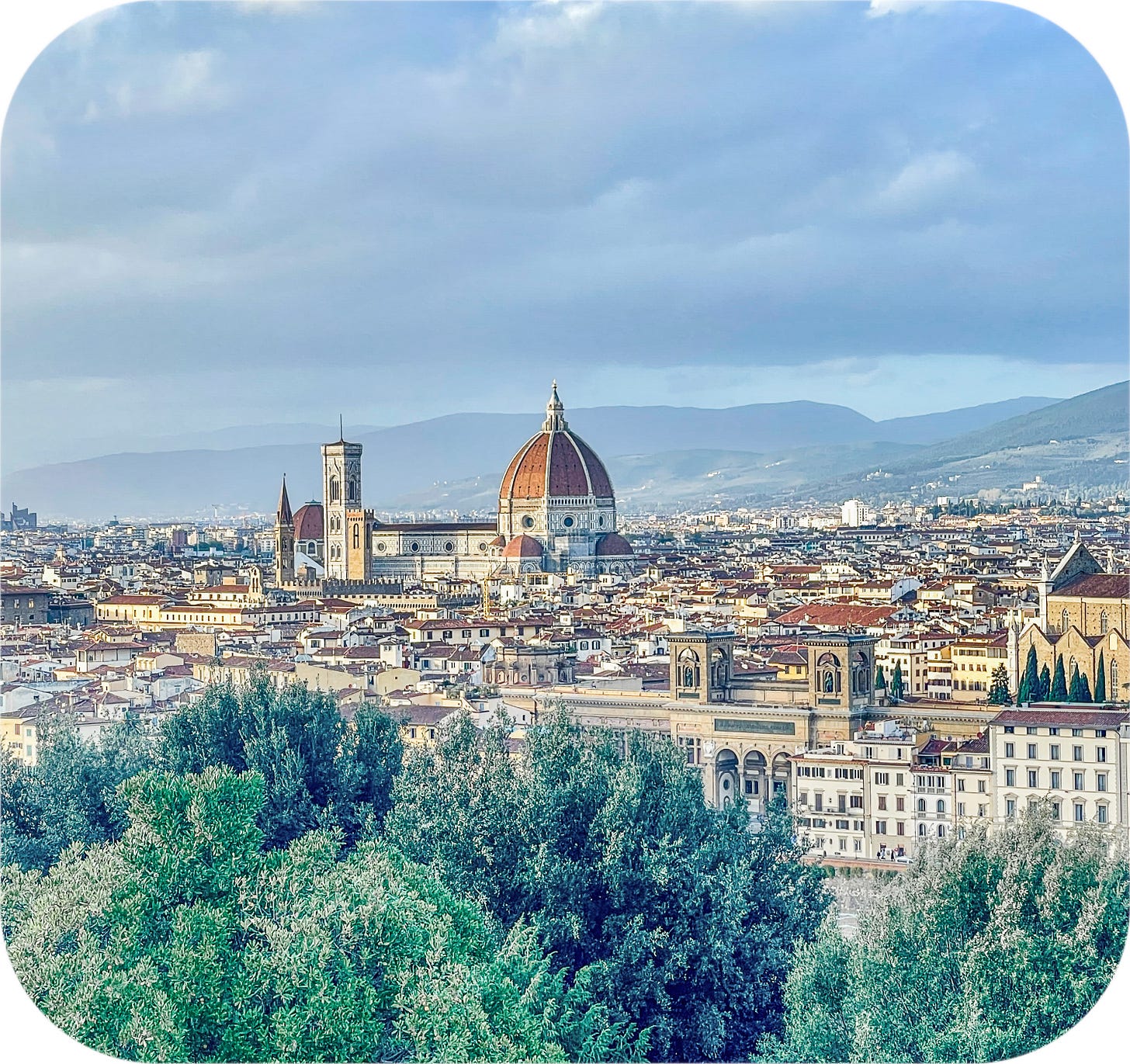

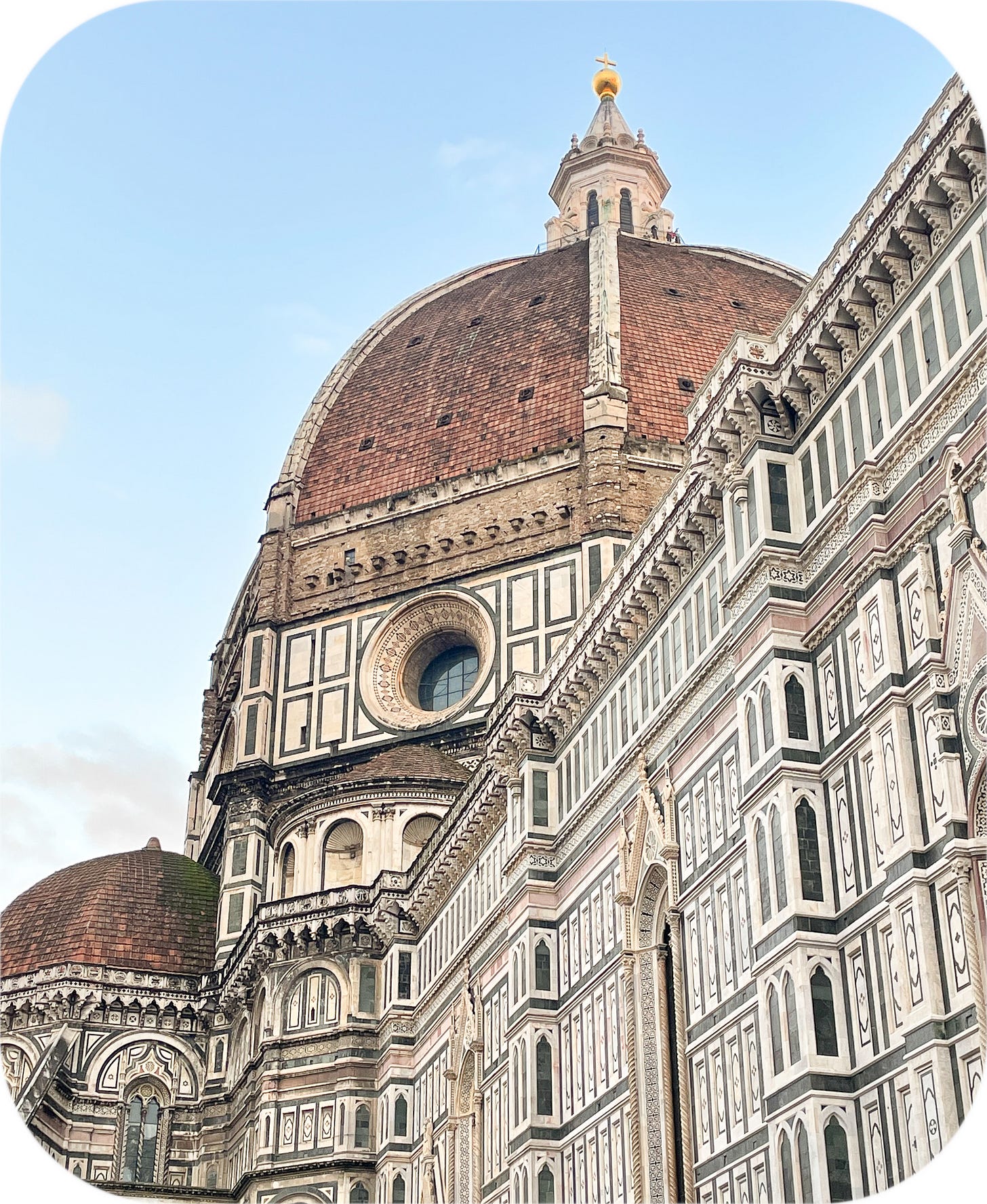
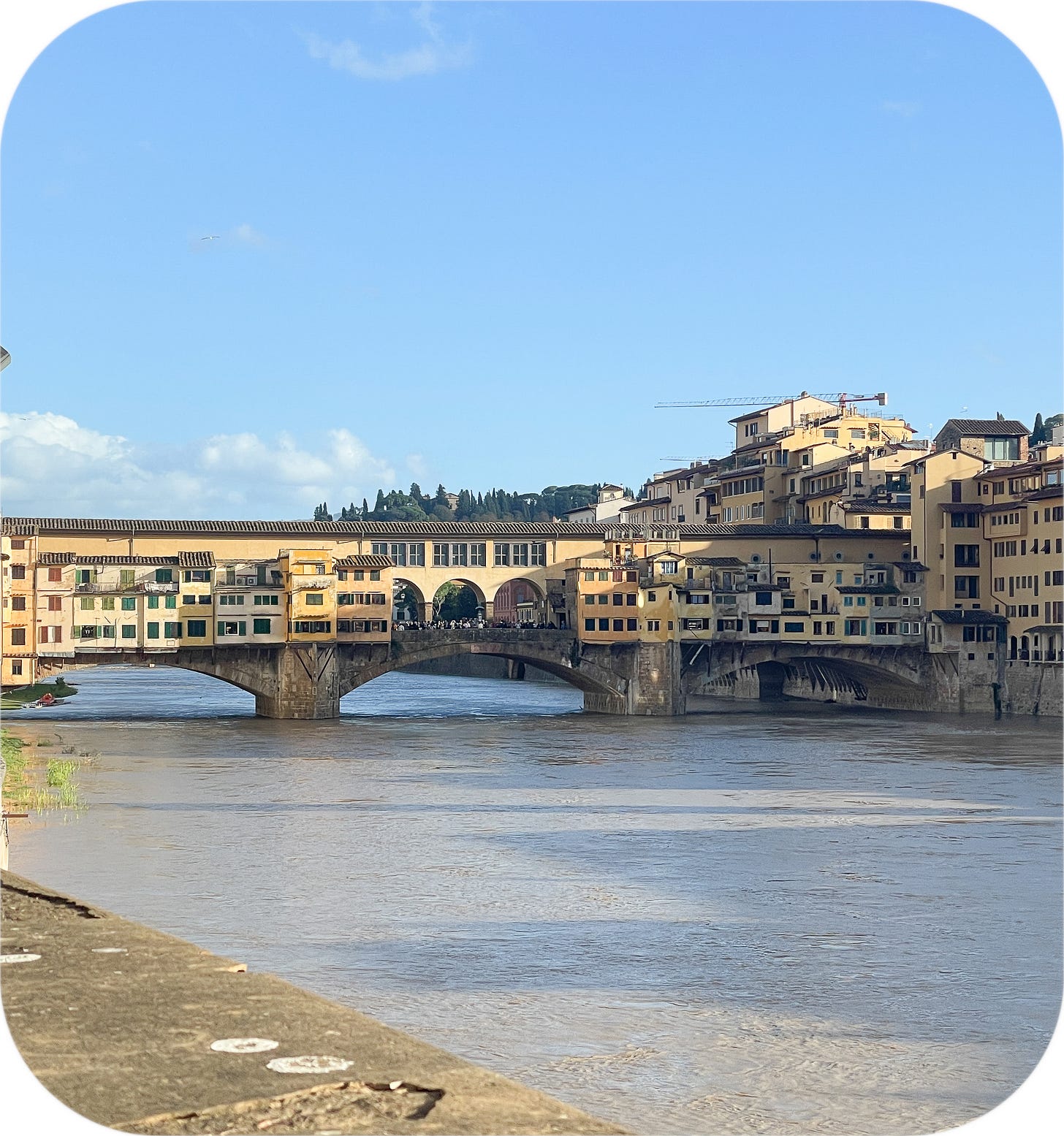
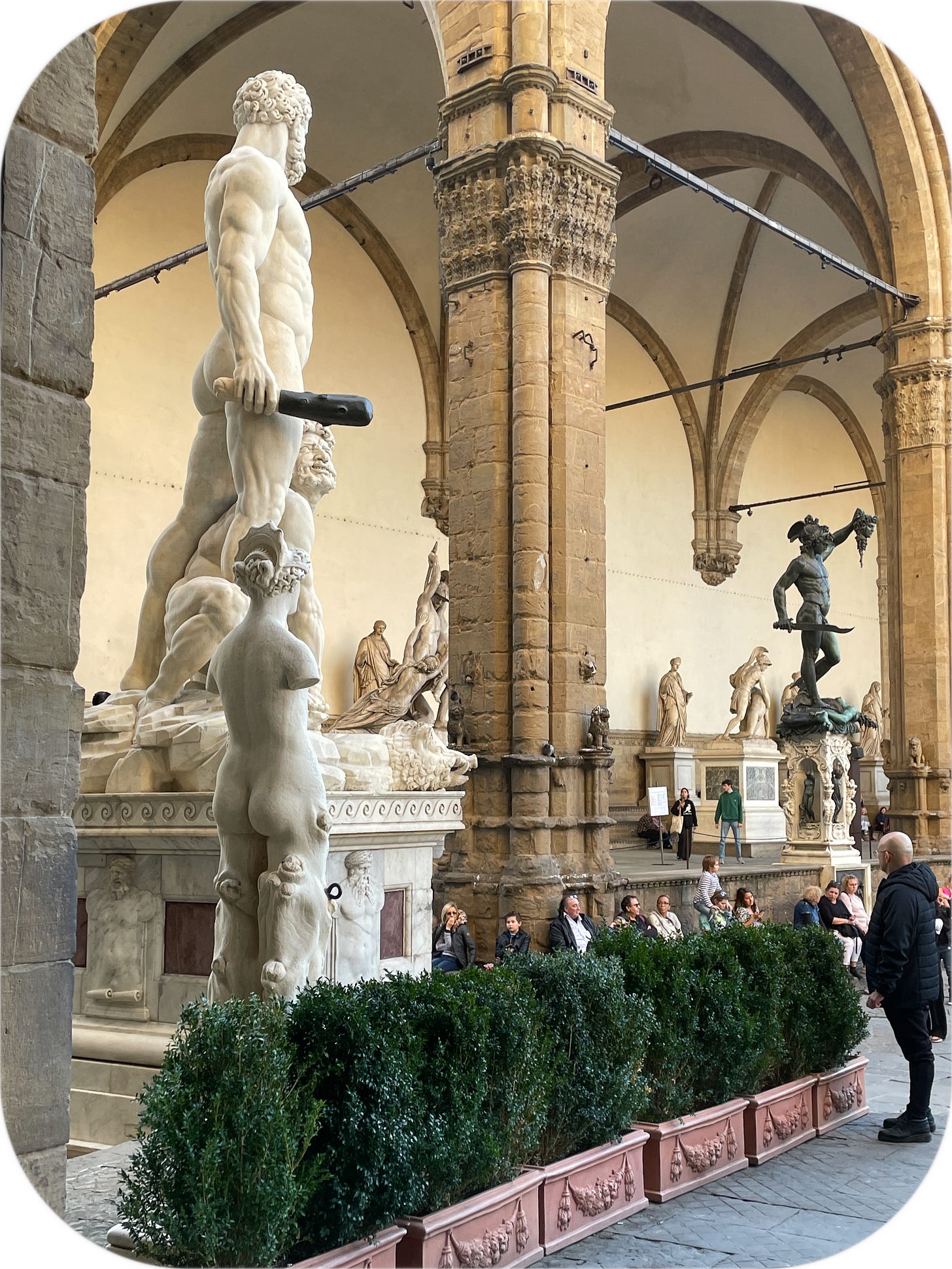
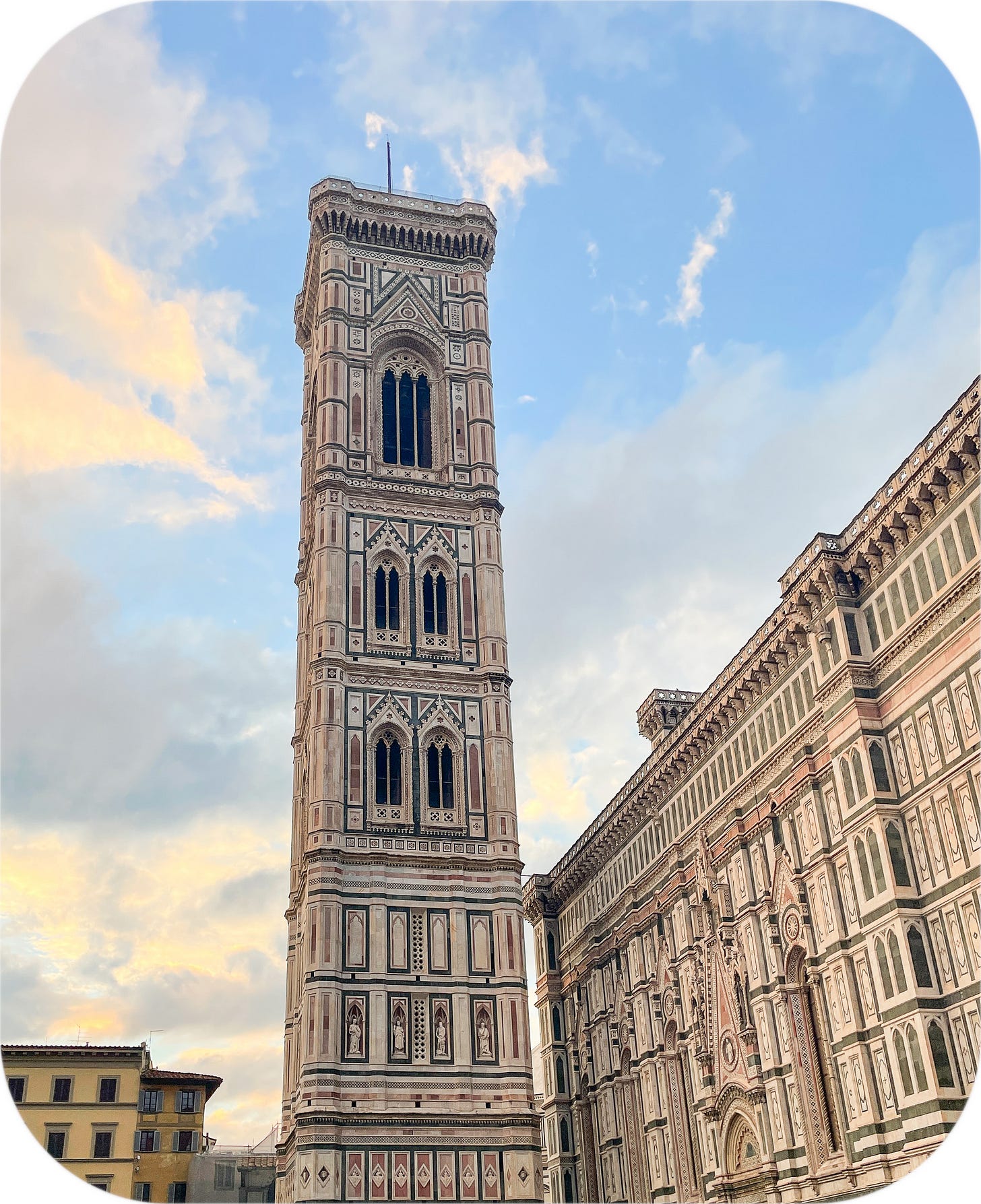
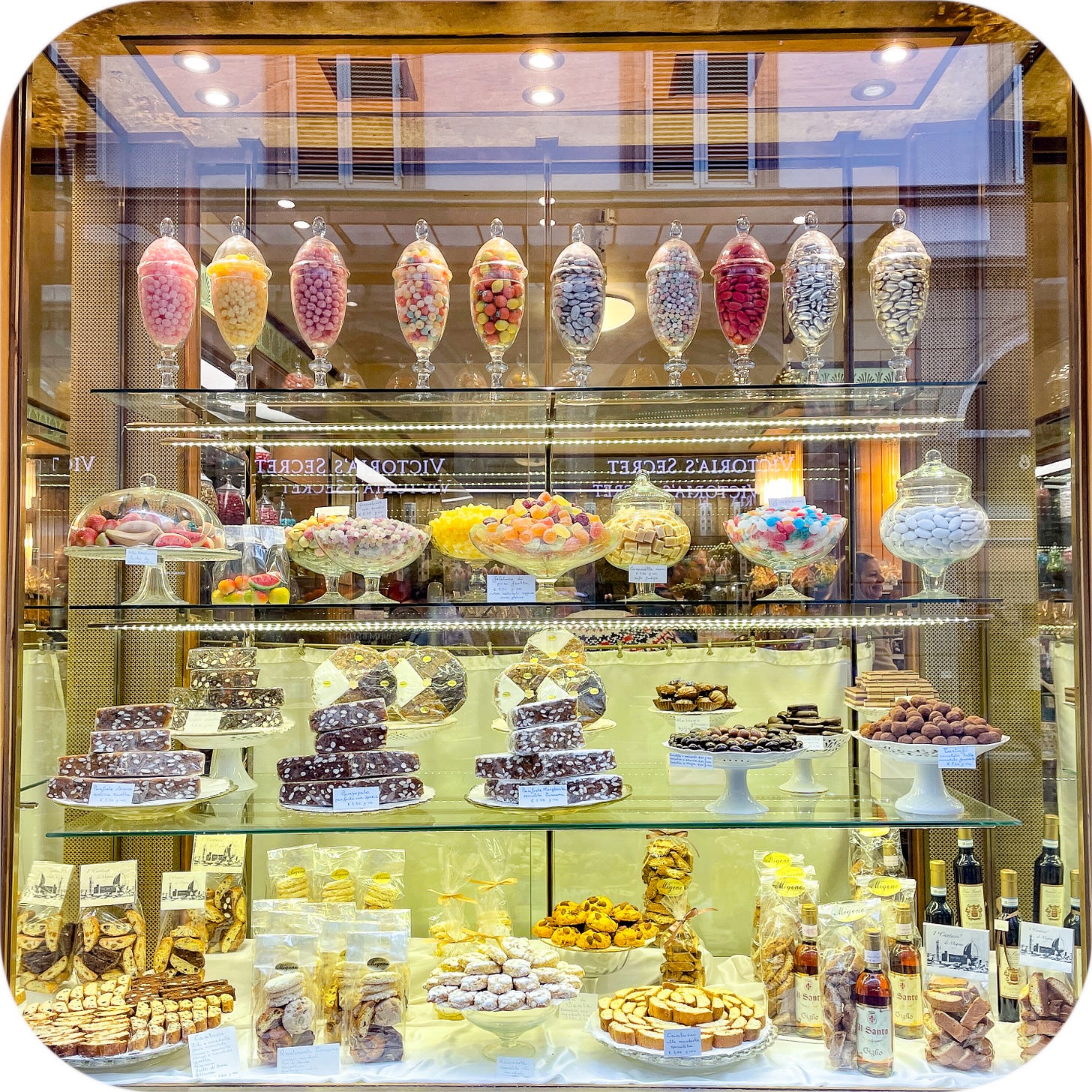
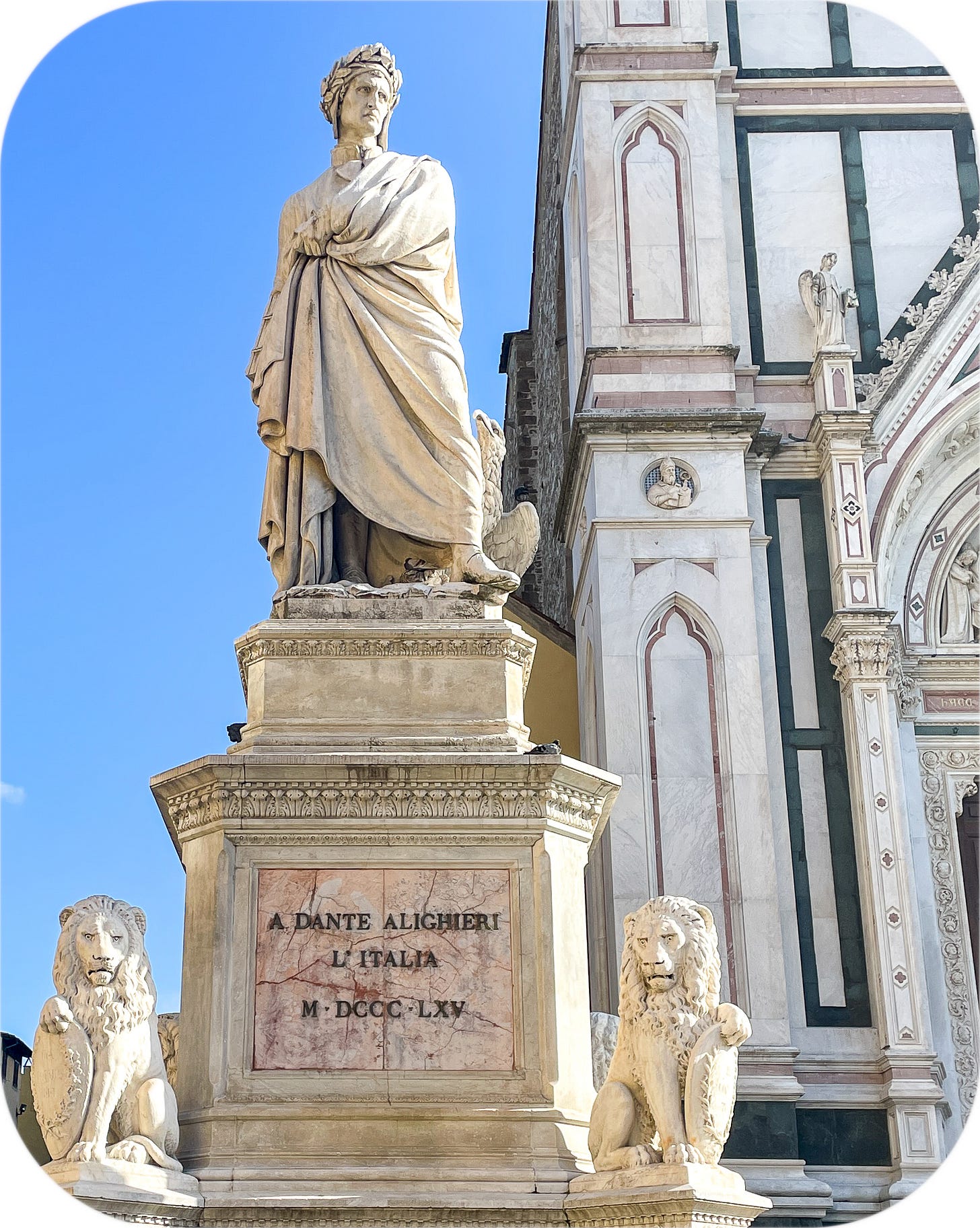
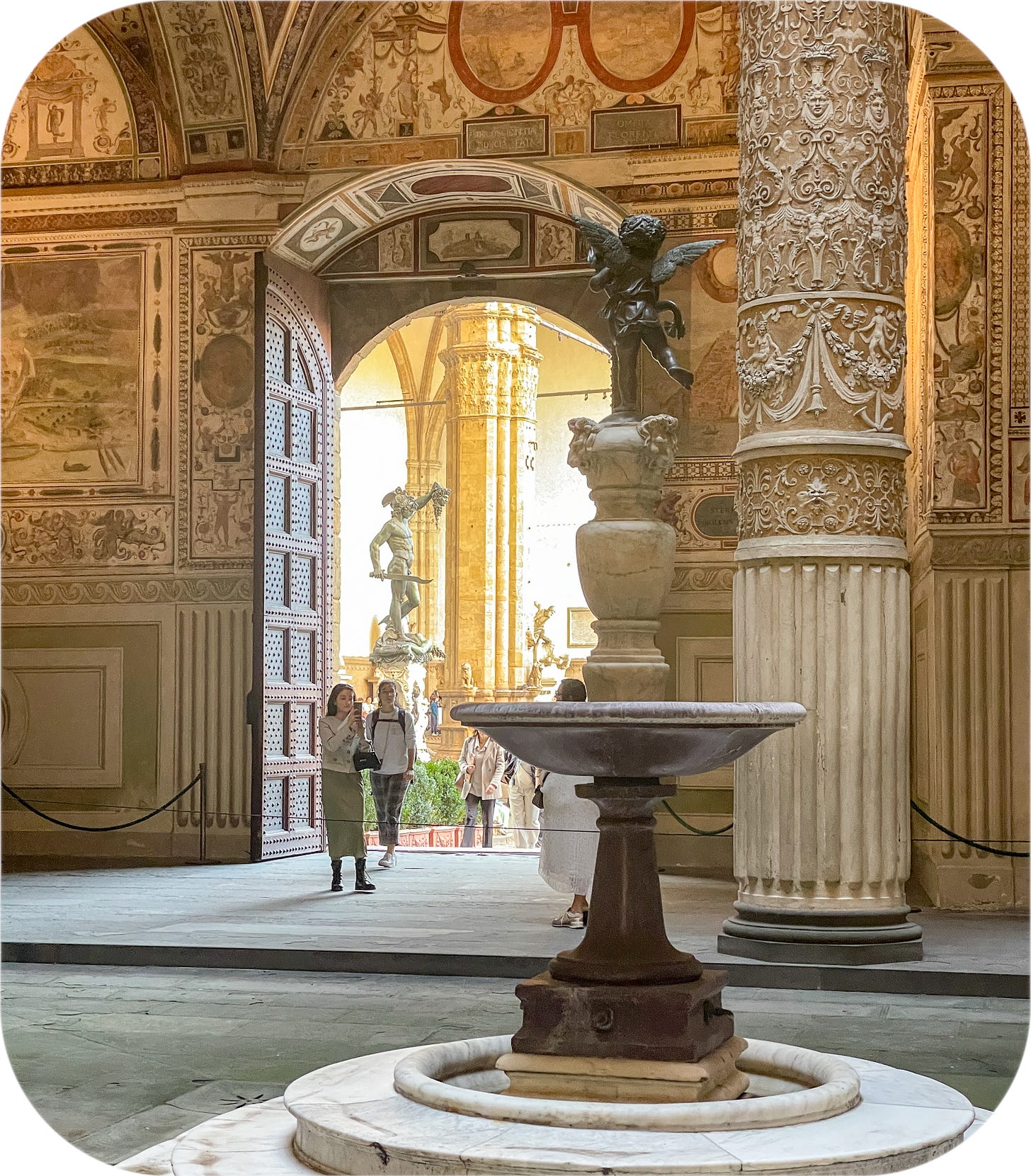
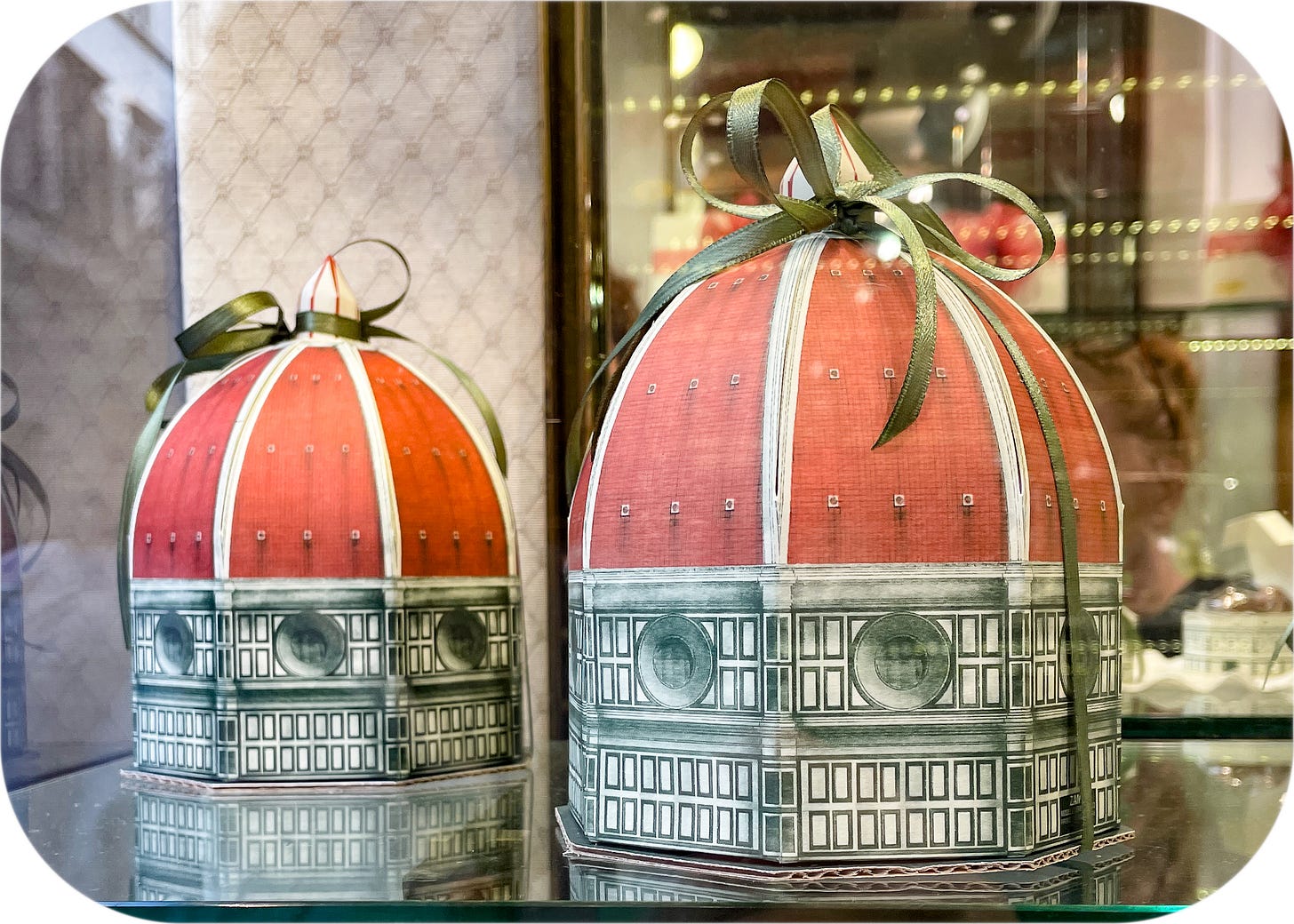

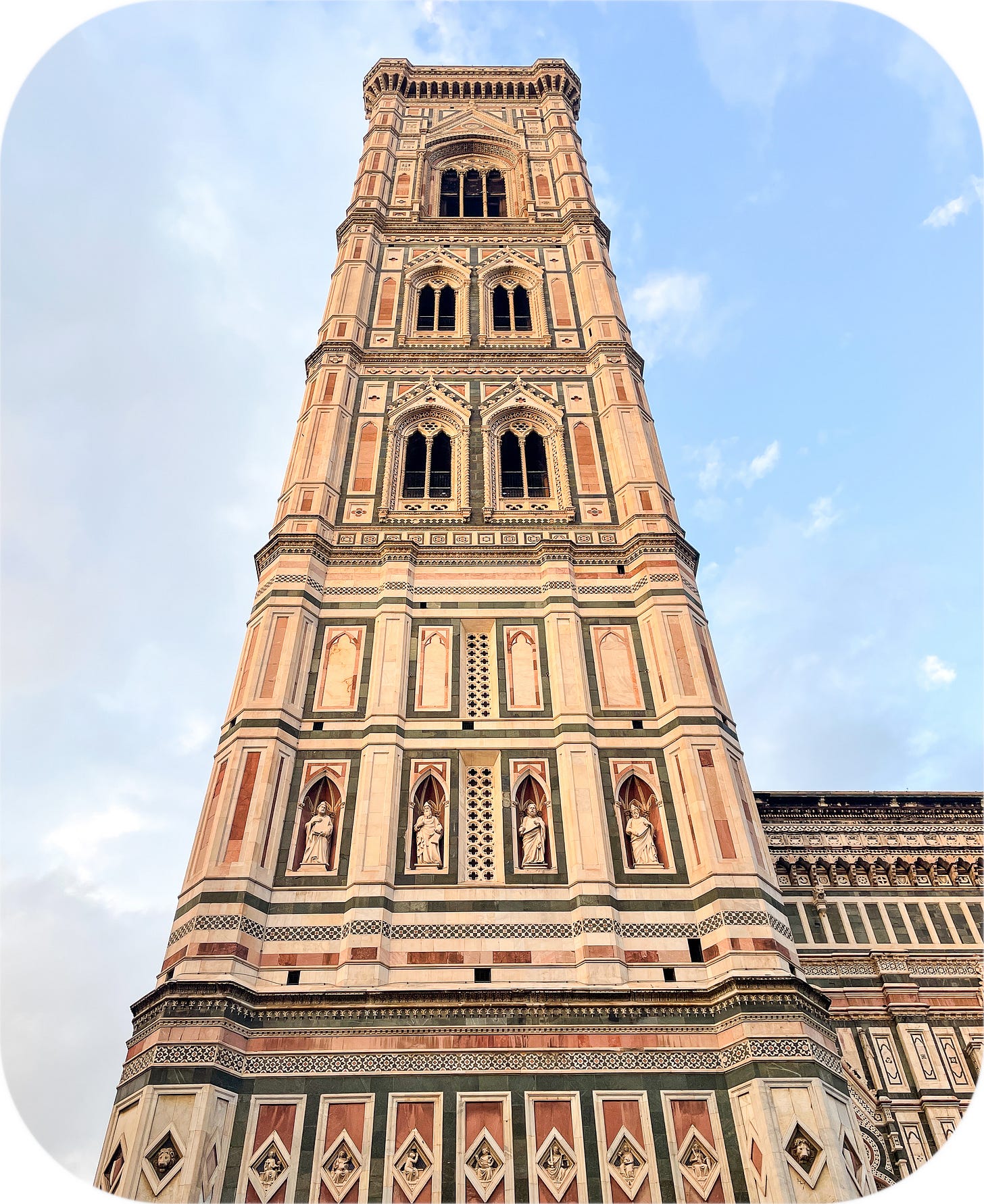
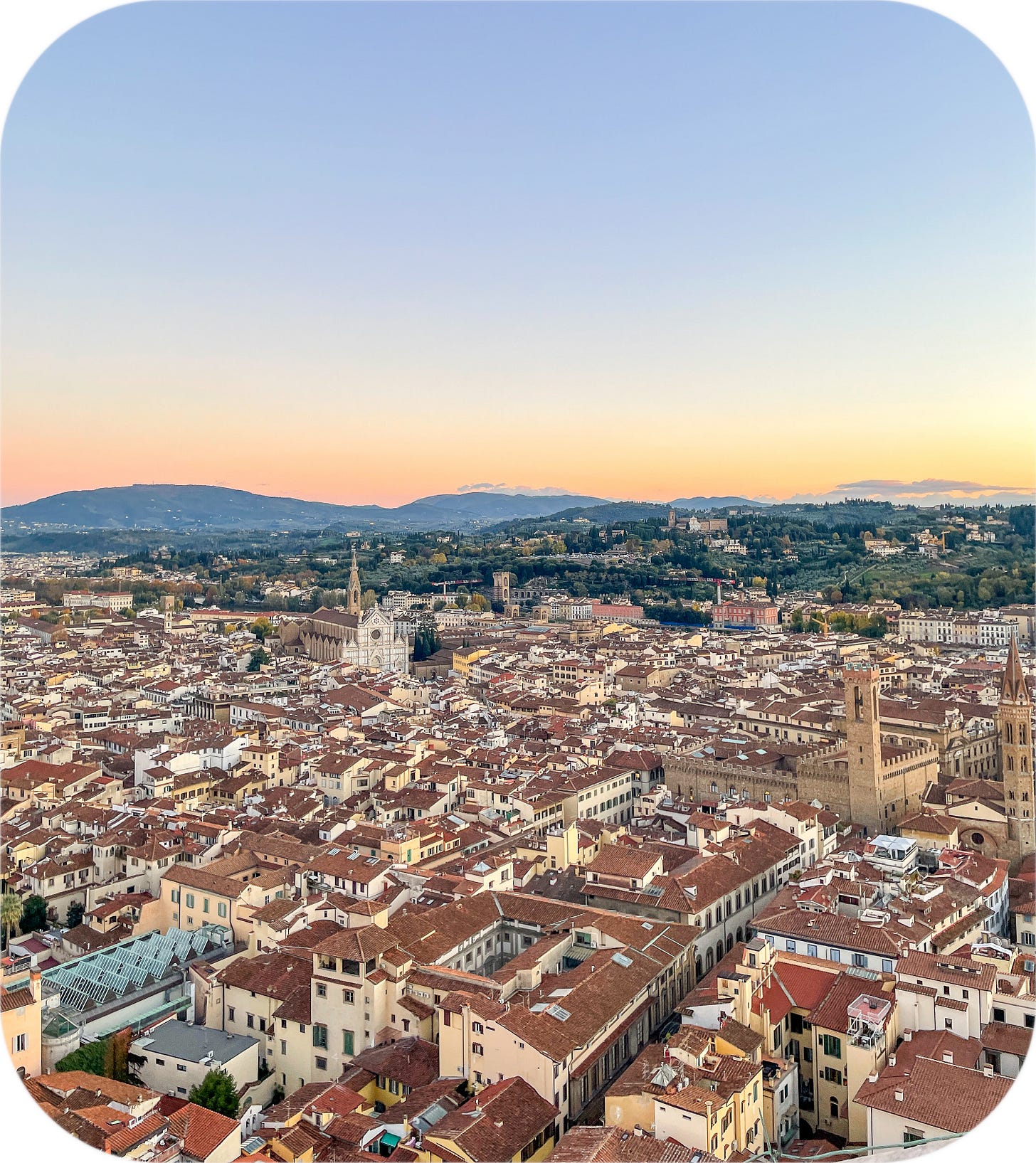

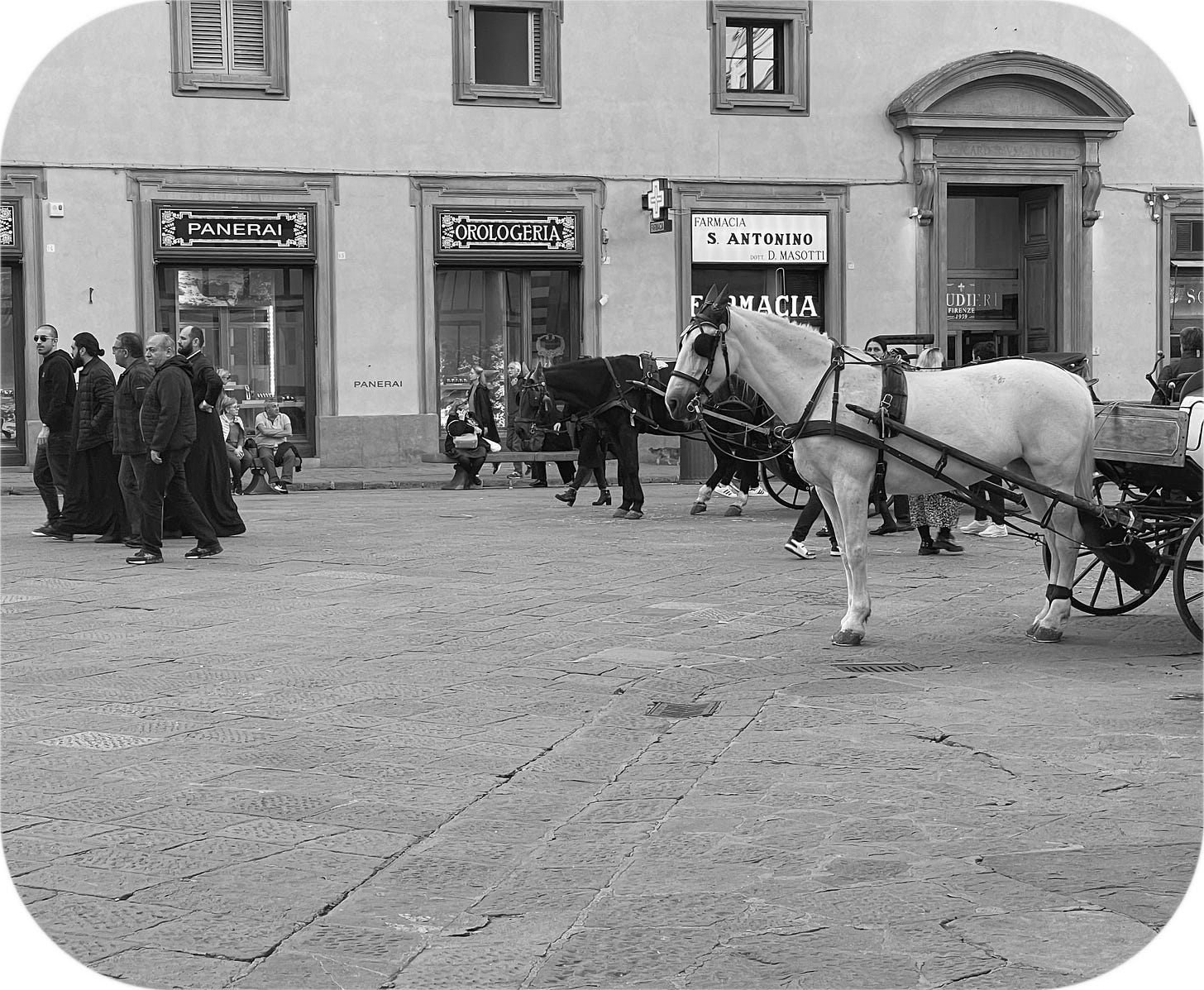

I really appreciate this take on it Jodi. A good reminder that beauty is so much more than skin deep!
Just glorious writing and photography, Jodi! I have visited Florence several times, but seeing it through your eyes, with some choice quotes from E. M. Forster’s A Room With a View, makes me long to return. Those swirling swallows at dusk were the crowning touch!